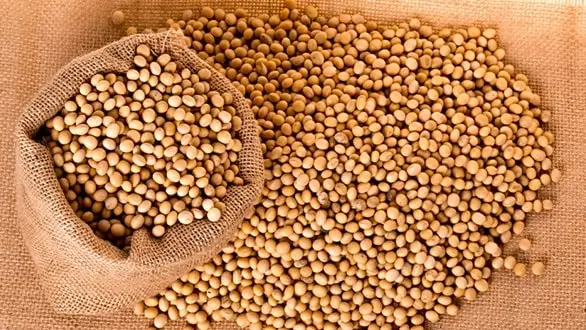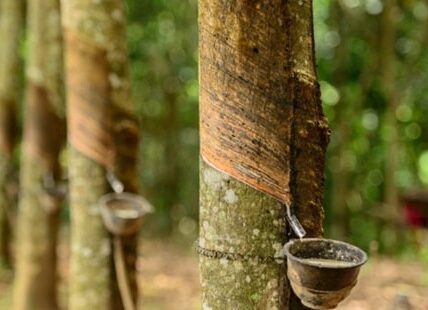Soybeans are among the most vital crops in the world over, exhibiting as a fundamental protein and oil source. By 2025, some countries shine as prominent contributors to the world’s soybean production. These countries are essential in fulfilling the demand for soybean on the entire world, which is consumed in animal feeding, vegetable oil, and diverse industrial use. Here’s discussing the top 10 biggest producers of soybeans in the world, with the latest production data in metric tons.
1. Brazil – 163,000,000 metric tons:
In 2024, Brazil produces 163 million metric tons of soybeans, retaining its soybean superiority. The nation is a soybean powerhouse because to its huge agricultural territory, pleasant climate, and advanced farming methods. Brazil’s diverse agricultural geography suits soybeans. Large Cerrado and Mato Grosso regions improve Brazil’s soybean output. Brazil’s bright, wet climate enhances soybean production. Modern farming boosts Brazil’s soybean yield. Precision agriculture, GE seeds, and new agronomic practises have increased soybean yields. Brazil leads soybean production with its agricultural innovation.
2. United States – 111,703,000 metric tons:
Second in soybean production, the US produced 111.7 million metric tons in 2024. Mechanized and technologically advanced U.S. agriculture provides the world’s soybeans. US soybean output depends on novel agricultural practices. Precision farming, technology, and improved equipment boost soybean production in the US. Thanks to its commitment to breakthrough technology, the U.S. leads soybean production internationally, ensuring a steady soybean market contribution. American soybeans impact national and global markets. U.S. soybeans meet agricultural and industrial needs. The nation’s export infrastructure distributes soybeans abroad. American soybeans provide many enterprises and meet worldwide soy demand.
3. Argentina – 48,000,000 metric tons:
Third in soybean output, Argentina produced 48 million metric tons in 2024. Argentina’s ample acreage and agreeable climate, especially in the Pampas, make it a significant soybean producer. Argentina relies on its fertile fields, notably in the Pampas, where soybeans thrive in nutrient-rich soils and perfect weather. Argentina’s sunlight and rains provide most of the world’s soybeans. Argentina exports plenty of soybeans owing to its vast farmlands. Arable terrain allows large-scale soybean farming to meet global demand. Argentina’s soybeans supply global demand for this versatile crop used in animal feed, cooking oil, and industry.
4. China – 20,500,000 metric tons:
Chinese soybean output is among the greatest despite heavy consumption. China produced 20.5 million metric tons of soybeans in 2024. China’s soybean production shows its food security and self-sufficiency. China produces a lot of soybeans for food security and import reduction. The country has increased soybean output using advanced farming technology and sustainable methods. The initiatives increase China’s soybean production lead. The Chinese government’s agricultural self-sufficiency projects demonstrate soybeans’ strategic value. China grows a lot of soybeans to boost food security and reduce market volatility. Thus, soybeans’ dual role as food and animal feed emphasizes their significance to China’s agriculture and people.
5. India – 11,000,000 metric tons:
India produced 11 million metric tons of soybeans in 2024, sixth worldwide. The nation’s extensive agricultural environment is ideal for soybean farming. Soybeans provide protein for people and livestock in India. Madhya Pradesh is the top Soyabean producer there. Flexibility makes the crop a cornerstone of India’s agricultural sector, meeting the nutritional needs of its enormous population and enhancing animal and human health. Different weather and soil types facilitate soybean growth in India’s agricultural landscape. The crop’s adaptability and endurance make soybeans crucial to India’s agriculture. The population’s diet needs soybeans’ protein, particularly as lifestyles change.
6. Paraguay – 10,000,000 metric tons:
Paraguay produced 10 million metric tons of soybeans in 2024, sixth worldwide. Thanks to good weather and efficient planting, the landlocked South American nation has grown its soybean sector. Paraguay’s climate boosts soybean output. The mild temperature of South America, with plenty of sunlight and rainfall, is ideal for soybean production. This climatic advantage enabled Paraguay’s soybean market expand globally. Modern agricultural methods have increased Paraguay’s soybean production. Farmers countrywide utilize precise farming, modern technology, and unique growth methods. This commitment to agricultural innovation has made Paraguay a global soybean producer.
7. Canada – 6,700,000 metric tons:
Canada produces the seventh most soybeans in the world due to its vast agricultural territory and commitment to sustainability. The nation supplied 6.7 million metric tons of soybeans to the globe in 2024. The wide, rich Canadian agricultural landscape is ideal for soybean farming. Sustainability in farming reinforces the nation’s environmental and resource management responsibilities. Canada’s soybean production meets worldwide environmental requirements with this commitment. In 2024, Canada produced 6.7 million metric tons of soybeans, meeting local requirements and contributing to foreign markets. Beans are essential for animal feed, cooking oil, and industry due to their flexibility. Soybean production in Canada meets the worldwide demand for this versatile crop and meets the nutritional needs of its people.
8. Russia – 6,000,000 metric tons:
Russia produced 6 million metric tons of soybeans in 2024, ninth worldwide. The soybean sector has risen gradually owing to agricultural technology and expansion. Strategically using modern agricultural practices has enhanced Russian soybean yield. Precision agriculture, innovative methodologies, and cutting-edge technology boost production. Russia dominates the soybean sector due to its agricultural development efforts. Russia’s soybean production has expanded owing to agriculture. Using untapped arable land and best practices has continuously enhanced soybean yields. This expansion strengthens Russia’s agricultural resilience and soybean dominance.
9. Ukraine – 4,800,000 metric tons:
Ukraine produced 4.8 million metric tons of soybeans in 2024, eleventh worldwide. Ukraine produces a lot of soybeans owing to its huge land and agricultural competence. Ukrainian soybean production has grown owing to good agroclimatic conditions. Soybeans thrive on fertile soil and good weather. This good environment has helped Ukraine grow plenty of soybeans. Ukrainian soybean production has grown due to agricultural innovation. The country actively embraces cutting-edge technology, agriculture, and practices. Innovation enhances soybean output and makes Ukraine a global leader, evolving the industry. With 4.8 million metric tons, Ukrainian soybeans are vital to the worldwide supply chain. Animal feed, cooking oil, and industry use soybeans. Ukraine helps meet global soybean demand.
10. Bolivia – 3,300,000 metric tons:
Bolivia rounds out the top 10 soybean producers with 3.3 million metric tons in 2024. Growing soybean production has boosted Bolivia’s economy and exports. Its soybean market is driven by favorable farming circumstances and expanding global demand. Bolivia’s soybean industry has flourished due to favorable circumstances. Optimal agroclimatic conditions improve soybean productivity. Bolivia’s soybean economy thrives on sunlight, moisture, and nutrient-rich soils. Bolivia is becoming more important in the soybean market as global demand rises. Bolivia produces 3.3 million metric tons of soybeans for animal feed, cooking oil, and industry. The once-local soybean is now a global player. Bolivia’s importance in the global soybean market indicates its agricultural and economic resilience. The soybean business has boosted Bolivia’s economy and agriculture.
Conclusion:
The largest 10 soybean producers in the world play a big role in satisfying the entire global demand for this versatile crop. Ranging from varied environments to modern agricultural practices and commitment to fresh inventions, these countries have a huge say in dictating the direction of the global soybean supply chain. That the world will continue relying on the soybeans for everything from generation of food output to the use of soybean in a myriad industrial applications means that these production dynamics currently prevailing in these countries will continue shaping the global soybean market going forward.

Brandon is the cheif editor and writer at WorldUnfolds.com. With a passion for storytelling and a keen editorial eye, he crafts engaging content that captivates and enlightens readers worldwide.















